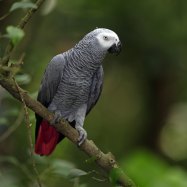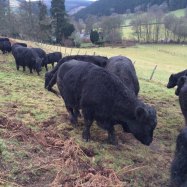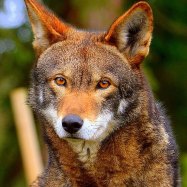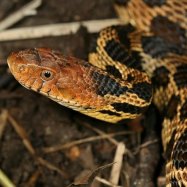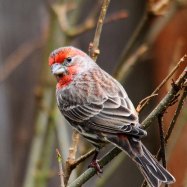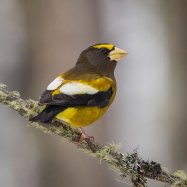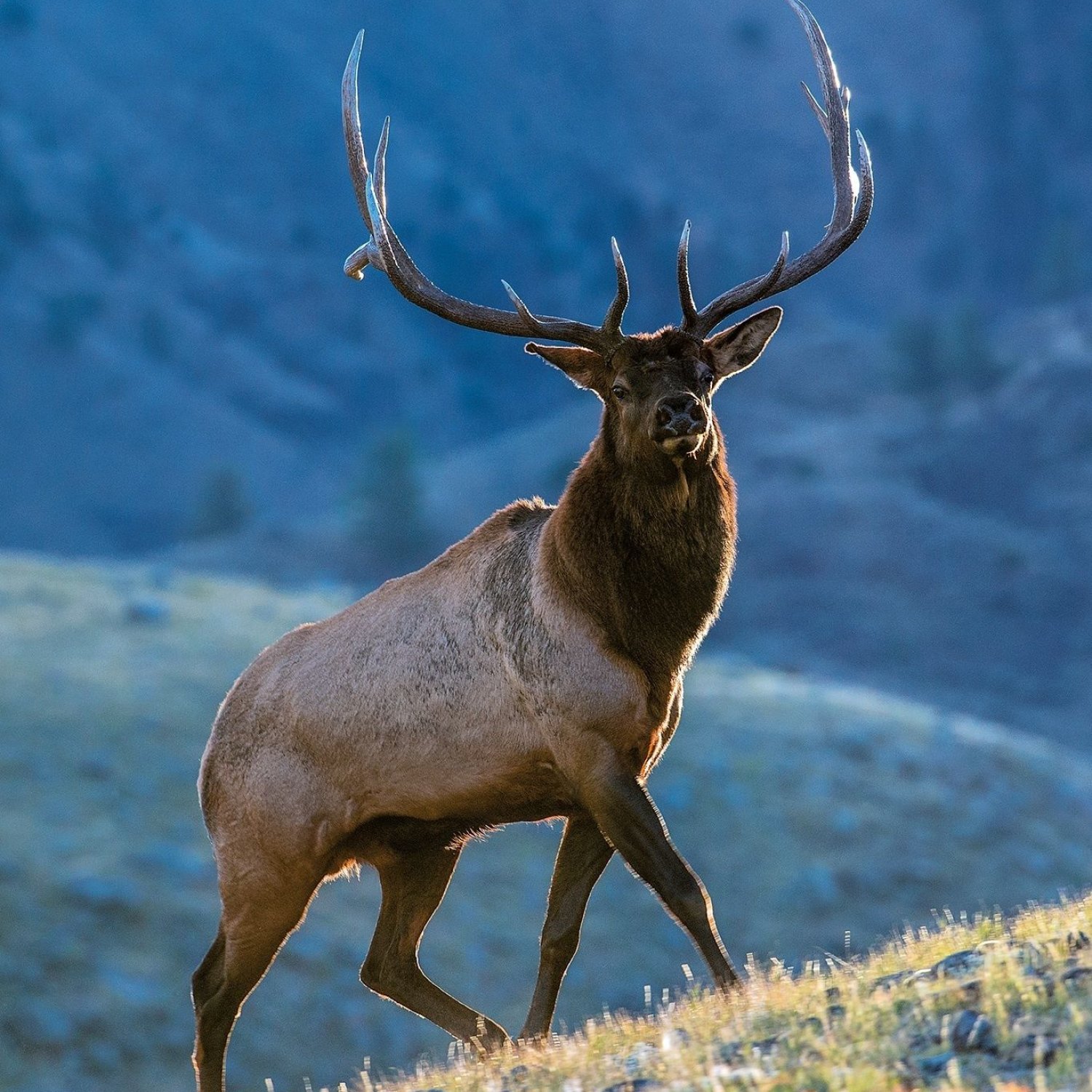
Elk
6.5 to 10 feet
The majestic Elk, also known as Wapiti, is a member of the deer family found in several states in North America and some parts of Asia. These grand creatures have a large and robust body shape, ranging from 6.5 to 10 feet in length. With their impressive antlers and beautiful coats, the Elk is a sight to behold in the wild. #AnimalFacts #Elk #Wapiti #Cervidae #NorthAmerica #Asia.
Animal Details Summary:
Common Name: Elk
Kingdom: Animalia
Habitat: Forests, meadows, and mountains
The Majestic Elk: A Symbol of Strength and Beauty
In the vast wilderness of North America and parts of Asia, there is a majestic animal that roams the forests, meadows, and mountains. Known for its impressive antlers and robust stature, the elk (Cervus canadensis) is a symbol of strength and beauty. This magnificent creature has captivated humans for centuries with its regal presence and has become an integral part of the ecosystem it inhabits.The elk belongs to the animal kingdom, phylum chordata, and class mammalia, making them distant cousins of other iconic animals such as the white-tailed deer and moose Elk. They are part of the order Artiodactyla, which means "even-toed ungulates," and the family Cervidae, which includes deer, moose, and caribou. The scientific and common name of this animal is derived from the Latin word "cervus," meaning deer, and "canadensis" referring to its geographical location in Canada.
Habitat and Feeding Habits
Elks are herbivorous animals, mainly feeding on plants such as grasses, herbs, and shrubs. Their diet also includes leaves, bark, and twigs of trees, making them essential for maintaining a balanced ecosystem. These majestic creatures have a unique feeding habit called "browsing," where they selectively choose the most nutritious parts of plants to consume.
Their habitat consists of a diverse range of ecosystems, including forests, meadows, and mountains. They are most commonly found in the Rocky Mountains, the Pacific Northwest, and the Great Plains of North America. However, they can also be found in parts of Asia, including China, Mongolia, and Russia. This wide geographical distribution is a testament to their adaptability to various environmental conditions Elephant Seal.
Physical Appearance and Behavior
The elk's distinctive feature is its massive antlers, which can grow up to 4 feet long and weigh over 40 pounds. These antlers are used for both defense and attraction during the mating season, also known as the "rut." Male elks use their antlers to compete with other males for the attention of females, in a remarkable display of strength and dominance. The antlers are shed and regrown every year, making them one of the fastest-growing bones in the animal kingdom.
Apart from their antlers, elks are known for their striking dark brown coloration, which resembles that of a deer. They have lighter-colored underparts, which help them blend in with their surroundings and provide camouflage from predators. Their body shape is large and robust, with long legs and a heavy body. On average, an adult elk can reach a length of 6.5 to 10 feet and weigh between 500 to 700 pounds, making them one of the largest species of deer.
Elks are solitary animals, but they also form herds during the winter months for protection and foraging purposes. They are most active during the early morning and evening, while spending the rest of their day resting or grazing. These creatures are known for their agility and can run at a speed of up to 45 miles per hour, making them excellent at evading predators.
The elk's mating season takes place in the fall, with males engaging in fierce battles to establish dominance and win the right to mate. Female elks, also known as cows, give birth to one calf at a time, usually in the spring. The calves, born with white spots, are highly vulnerable and rely on their mothers for protection and nourishment. However, within a few months, they are strong enough to join their mothers in the herd.
Significance and Conservation Efforts
Elks have held a significant cultural and ecological importance for centuries. Native American tribes such as the Lakota and Cheyenne consider them a sacred animal, and their culture is intertwined with the elk's way of life. They are also a vital food source for both humans and other predators such as wolves, bears, and mountain lions.
Despite their cultural and ecological significance, elk populations have faced challenges due to human intervention in their natural habitat. Habitat loss, diseases, and overhunting have all contributed to a decline in elk populations in the past. However, thanks to conservation efforts, elk populations have rebounded in recent years, with an estimated 1 million elks in the United States alone.
In addition to conservation efforts, hunting regulations and management plans have played a vital role in maintaining a healthy elk population. Hunting is not only a means for controlling the population but also a source of revenue for conservation efforts. Many states in North America have a designated elk hunting season, carefully monitored to ensure the sustainability of the species.
Interactions with Humans
Elks have been a source of fascination and admiration for humans for centuries, which has led to interactions between the two species. Tourists often travel to areas where elks are commonly found to catch a glimpse of them in their natural habitat. Some even participate in guided tours or wildlife excursions to see these majestic animals up close.
However, it's essential to remember that elks are wild animals and should be observed from a safe distance. As with any animal, it's crucial to respect their space and avoid disrupting their natural behaviors. Elk attacks on humans are rare, but it's essential to keep a safe distance to avoid any potential danger.
The elk's economic value has also played a role in human-animal interactions. Apart from hunting, their antlers are used for decorative purposes in various industries, including jewelry and furniture. Their meat is also considered a delicacy by some, and can even be found on menus at high-end restaurants.
In Conclusion
In summary, the majestic elk is a remarkable animal that has captivated humans for centuries. From their impressive antlers to their robust stature, these creatures are a symbol of strength and beauty in the wild. Their adaptability, significance in culture, and essential role in ecosystems make them a unique and essential species in North America and parts of Asia. With conservation efforts and responsible management, we can ensure that future generations will continue to marvel at the majestic elk's grandeur and splendor.

Elk
Animal Details Elk - Scientific Name: Cervus canadensis
- Category: Animals E
- Scientific Name: Cervus canadensis
- Common Name: Elk
- Kingdom: Animalia
- Phylum: Chordata
- Class: Mammalia
- Order: Artiodactyla
- Family: Cervidae
- Habitat: Forests, meadows, and mountains
- Feeding Method: Herbivorous
- Geographical Distribution: North America and parts of Asia
- Country of Origin: United States
- Location: Various states in North America and parts of Asia
- Animal Coloration: Mostly dark brown with lighter underparts
- Body Shape: Large and robust
- Length: 6.5 to 10 feet
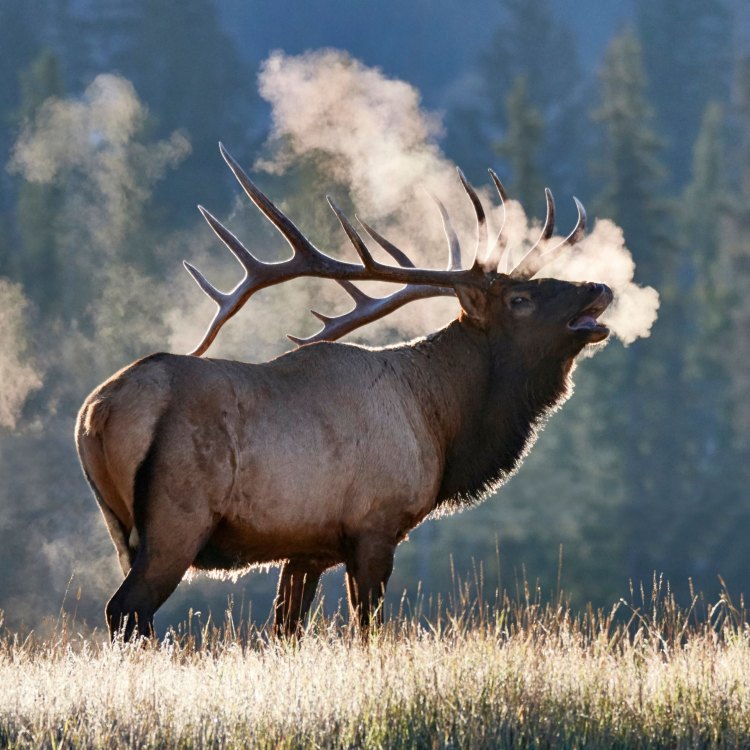
Elk
- Adult Size: 4.4 to 5.6 feet at the shoulder
- Average Lifespan: 10 to 13 years
- Reproduction: Sexual
- Reproductive Behavior: During the breeding season (rut), males engage in competitive behaviors such as bugling and sparring
- Sound or Call: Bugling
- Migration Pattern: Some populations migrate seasonally
- Social Groups: Form small to large herds
- Behavior: Diurnal and gregarious
- Threats: Habitat loss, hunting, predation
- Conservation Status: Least Concern
- Impact on Ecosystem: Ecologically important as herbivores and prey species
- Human Use: Hunting, tourism, and meat consumption
- Distinctive Features: Large antlers on males, towering size
- Interesting Facts: Elk are the second-largest species in the deer family after the moose. They are strong swimmers and can run at speeds up to 45 miles per hour.
- Predator: Wolves, bears, and mountain lions
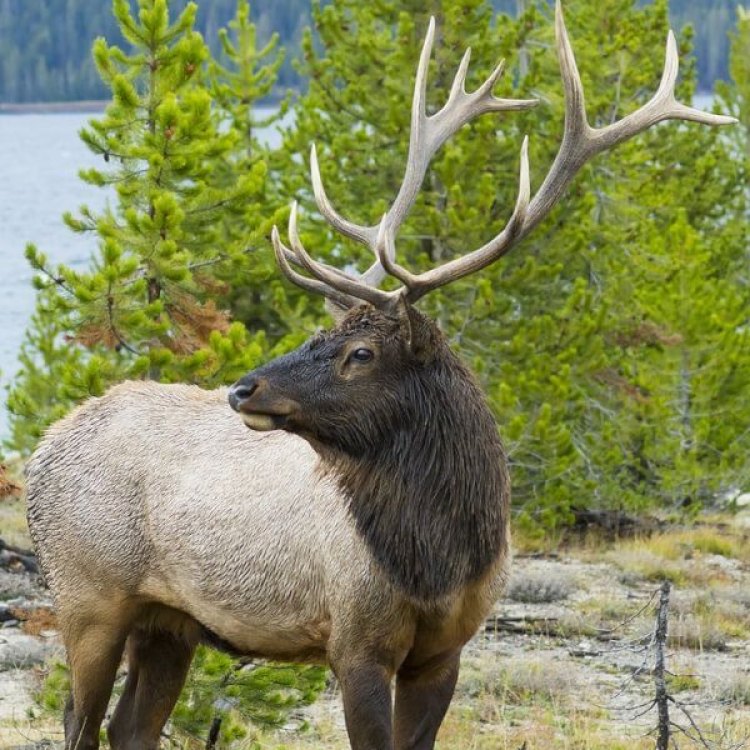
Cervus canadensis
The Majestic Elk: An Icon of the Wild
In the heart of the mountains and forests of North America, the mighty elk roams free. With its towering size and impressive antlers, this animal has captured the hearts and imaginations of people for centuries. From Native American folklore to modern-day wildlife documentaries, the elk has been a symbol of strength, grace, and beauty. In this article, we will delve into the unique features and behavior of this magnificent creature PeaceOfAnimals.Com.The elk, also known as wapiti, is a large mammal classified in the deer family, Cervidae. It is native to North America and parts of Asia, with its range spanning across Canada, the United States, and some regions of Russia and China. It is the second-largest species in the family after the moose, with an average weight of 400 to 700 pounds and standing at 4.4 to 5.6 feet at the shoulder. The female elk, or cows, are slightly smaller than males, also known as bulls.
These majestic creatures have an average lifespan of 10 to 13 years, with some reaching up to 20 years in ideal conditions. However, their numbers have been declining in recent years due to various threats, including habitat loss, hunting, and predation. As a result, they are currently classified as least concern on the International Union for Conservation of Nature's (IUCN) Red List Egret. Despite this, conservation efforts and strict management practices have helped maintain stable populations in many areas.
Elk, like other deer species, reproduce sexually. The breeding season for elk, also known as the rut, occurs in the fall. During this time, males engage in competitive behaviors to attract females and establish dominance. The most significant display of this is through their distinctive sound, known as bugling. The bugle is a loud, piercing vocalization that can be heard for miles and is used to attract females and warn off other males. The rut is also marked by sparring between males, where they engage in antler-locking competitions to establish their place in the hierarchy.
Along with their unique sounds and behaviors, elk also have distinctive physical characteristics. The biggest of those are the antlers on males. These antlers can grow up to 4 feet in length, with a span of up to 5 feet. They are one of the fastest-growing bones in the animal kingdom, growing up to an inch a day. The antlers are shed and grown every year, with the size and shape indicating the health and strength of the bull. The purpose of these antlers is mainly for display and to attract mates, but they also serve as a form of defense.
Elk are diurnal, meaning they are most active during the day and rest at night. They are also gregarious animals, which means they live in social groups. These groups, also known as herds, can range from small family units to large groups with hundreds of individuals. During the winter, elk herds usually congregate in valleys and lowlands, where they have access to food and shelter from harsh weather conditions.
Interestingly, some populations of elk migrate seasonally between their summer and winter ranges. This behavior is most commonly seen in the Rocky Mountains, where elk move from high mountain valleys to lower elevations in the winter months. This migration helps them access food sources and avoid extreme weather conditions, ultimately leading to better survival rates.
Elk also play a crucial role in the ecosystems they live in. As herbivores, they graze on a variety of plants, helping to maintain a balance in vegetation. They also provide a source of food for predators such as wolves, bears, and mountain lions. In addition, they are a significant source of food for humans, both traditionally and in modern times.
The human use of elk, however, has also posed a threat to their populations. Hunting elk has been a long-standing tradition in North America, with many regulations and restrictions in place to sustain their populations. Elk meat is considered a delicacy, and hunting also generates income through the sale of hunting licenses. In recent years, tourism has also increased, with many people flocking to national parks and reserves to see these magnificent creatures in their natural habitat.
Elk are not only important for their ecological and economic significance but also for their cultural and spiritual value. For Native American cultures, elk have been a symbol of strength, agility, and wisdom. They have been featured in stories and traditions, and their antlers are used in ceremonies and rituals. For modern society, elk represent a connection to nature and the wild, reminding us of the balance and harmony humans share with other beings on the planet.
In conclusion, elk are a defining species of the North American landscape. With their towering size, impressive antlers, and distinctive sound, they capture the curiosity and fascination of people. But beyond their aesthetic value, they play a crucial role in maintaining the balance of ecosystems and are embedded in the cultural and spiritual fabric of the region. As stewards of the land, it is our responsibility to protect and preserve these majestic creatures for future generations to enjoy.
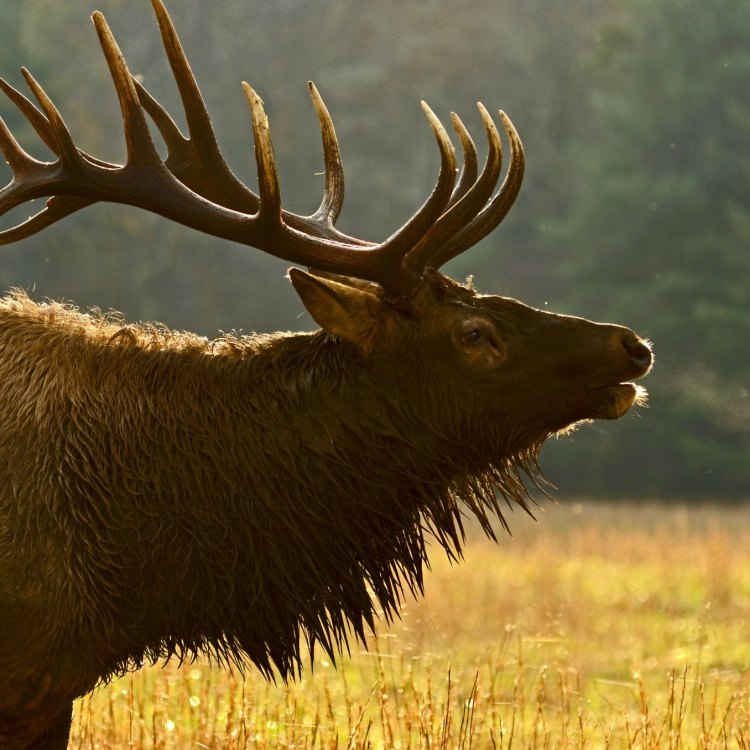
The Majestic Elk: A Symbol of Strength and Beauty
Disclaimer: The content provided is for informational purposes only. We cannot guarantee the accuracy of the information on this page 100%. All information provided here may change without prior notice.

